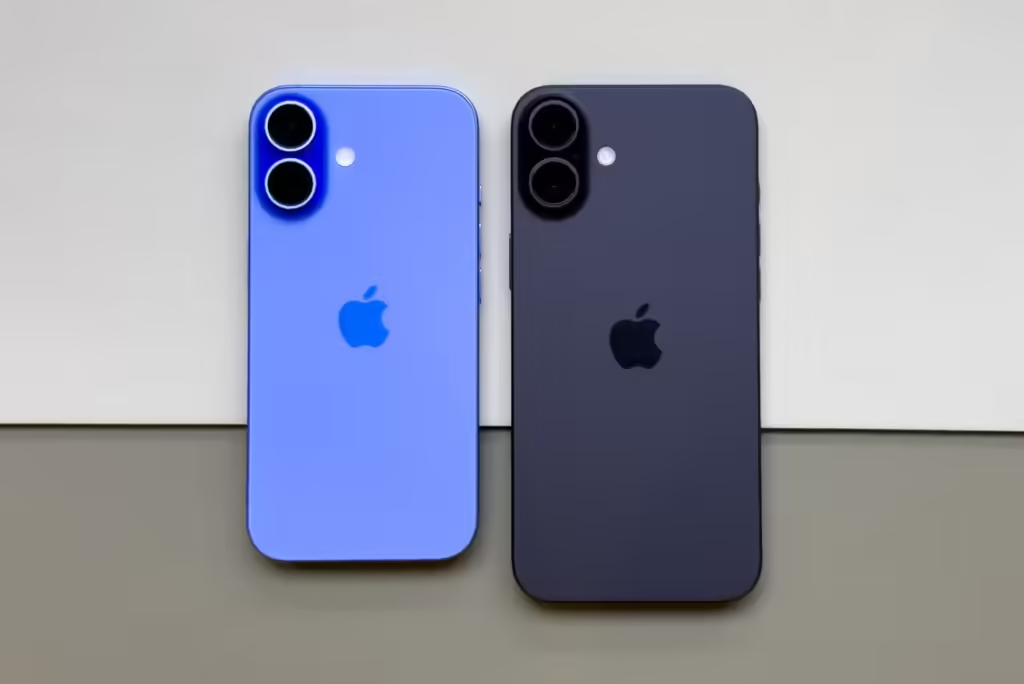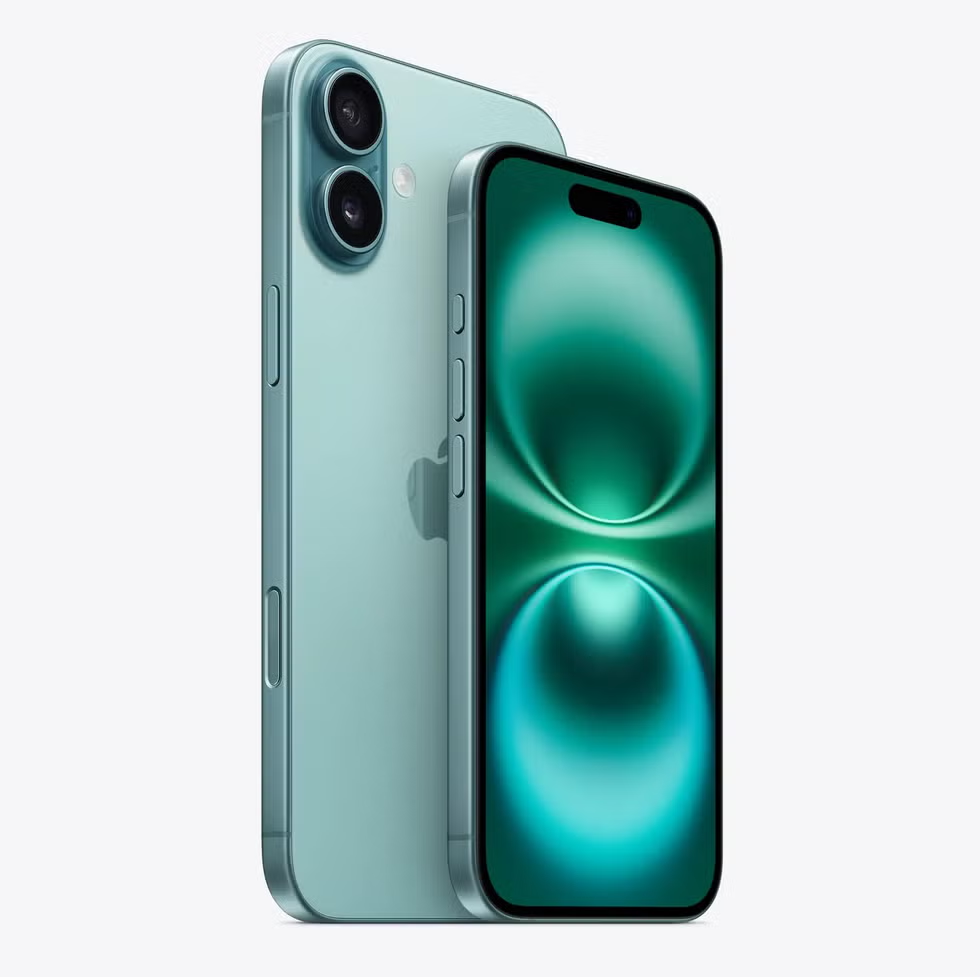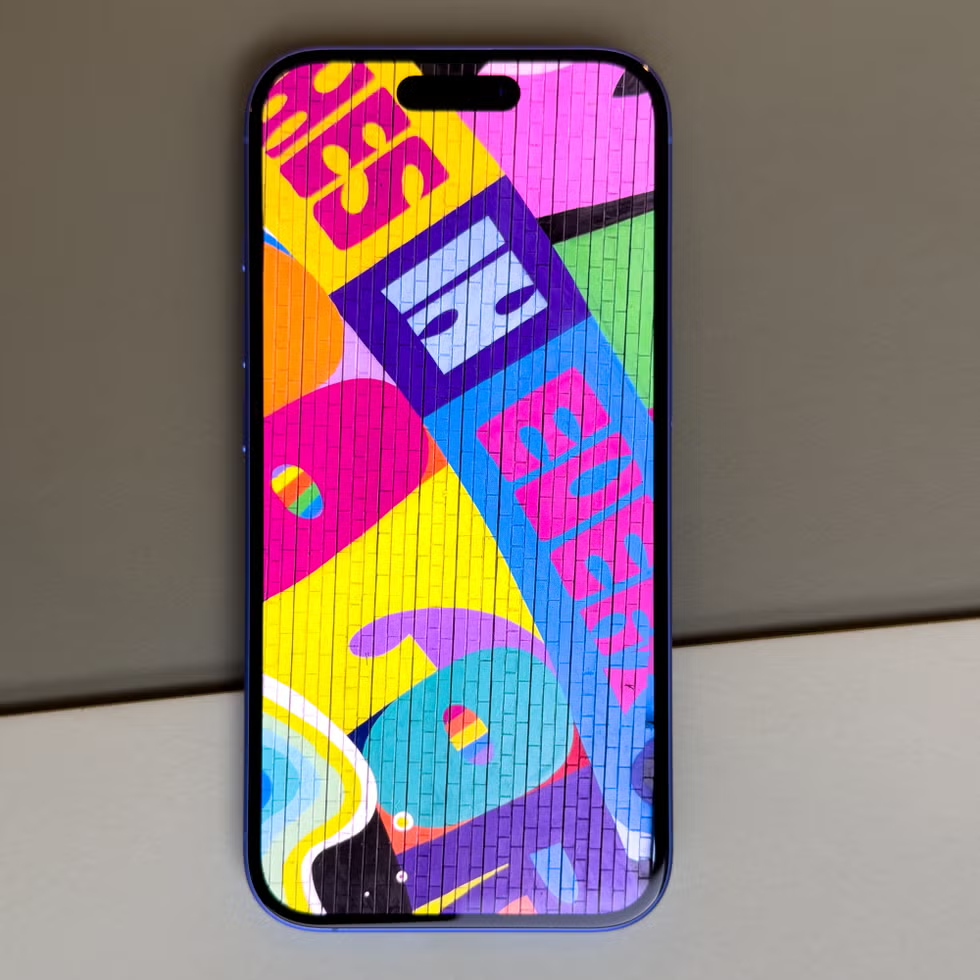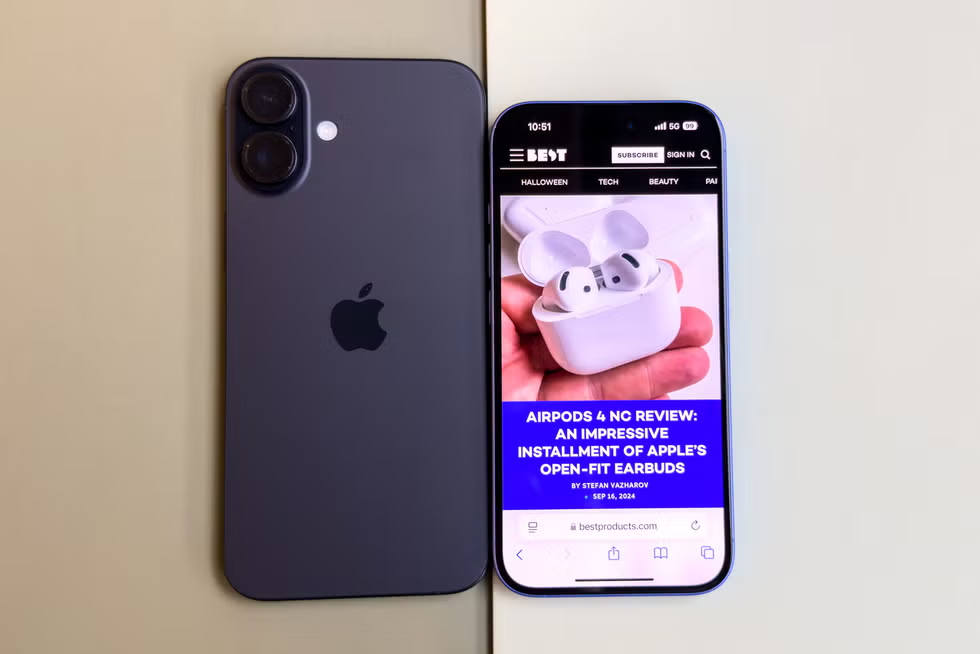Some Pro features trickle down to the standard lineup, and Apple’s built-in AI is coming.

After consecutive years of iterative updates with (mostly) invisible, if meaningful, novelties, Apple put the iPhone through a rigorous refresh in 2024. The iPhone 16 and 16 Plus duo arrived alongside the iPhone 16 Pro and 16 Pro Max, the Apple Watch Series 10, and new AirPods at the Glowtime keynote event last week, and this generation plenty of improvements compared to the iPhone 15 and iPhone 15 Plus it’s replacing. There’s a distinctive new design with a pair of new hardware buttons, a next-generation chip tailor-made for Apple Intelligence, and a ton of new iOS 18 features, to name a few highlights.
The newcomers carry the same starting prices as the previous generation. The iPhone 16 begins at $799, while the big-screen Plus model costs an extra $100.

Apple iPhone 16
$799 AT APPLE
| PROS | CONS |
|---|---|
Key Specs
| Chip | A18 Bionic chip with 6-core CPU, 5-core GPU, 16-core Neural Engine |
|---|---|
| iPhone 16 Display | 6.1-inch Super Retina XDR OLED display with 460 pixels per inch |
| iPhone 16 Plus Display | 6.7-inch Super Retina XDR OLED display with 460 pixels per inch |
| Memory | Up to 512GB of storage |
| Camera (rear) | 48MP main, 12MP ultra-wide, sensor-shift optical image stabilization, Dolby Vision-enhanced 4K video recording, spatial photo and video capture |
| Camera (front-facing) | 12MP with Face ID |
| Connectivity | USB-C, 5G, Bluetooth 5.3, Wi-Fi 7, eSIM |
| Other | Action button, camera capture button, IP68 waterproof, stereo speakers, MagSafe |
Apple giving a major design and hardware revamp of the iPhone 16 and iPhone 16 Plus without changing their pricing made me approach testing the products with a mixture of curiosity and hefty expectations, and that’s before factoring in the imminent arrival of Apple Intelligence — the brand’s elaborate set of generative AI tools. Are these iPhones the most consequential replacements of Apple’s mainstream (sans extra monikers like Pro or SE) smartphone to date?
To find out the answer, I put the iPhone 16 and iPhone 16 Plus through their paces after attending the launch in Cupertino, California. Below is a breakdown of the noteworthy upgrades, as well as how this lineup stacks up within past iterations.
How I Tested
I spent a week alternating between the iPhone 16 and iPhone 16 Plus as my primary phones. I put them through a mixed-use routine that includes making calls and sending tons of instant messages on various platforms, fielding work emails and Slack conversations, navigating the web and social media, streaming Apple Music playlists, capturing photos and videos, and gaming.

Holding the 6.1-inch iPhone 16
A Word About Apple Intelligence
Apple’s take on generative AI tools will land on compatible iPhone, iPad, and Mac products, including the entire iPhone 16 lineup, via an update in the weeks ahead.
I haven’t had a chance to give Apple Intelligence a thorough test by using it daily, but my brief encounters with the tech have been positive. I witnessed the AI system supercharge multiple common tasks — from writing emails and transcribing calls to making sophisticated image alterations, all the way to generating unique emojis.
The Apple Intelligence arrival should usher in a new chapter of helpfulness and usability to iPhones that can run it. What’s more, an upgraded Siri will accompany it, one that will understand more elaborate requests and text commands.
A Couple of Design Improvements Make the 16 Stand Out
A BRAND NEW CAMERA BUMP
By adding a rear camera bump shaped like a vertical pill and a camera button on its right side, Apple made the iPhone 16 and 16 Plus look radically different and fresher than their predecessors. After more than half a decade of squarish layouts going back to the iPhone 11, the redesigned camera shape invoked memories of the iPhone X and iPhone XS. Still, the larger lenses with colorful rings will leave no doubt that you’re rocking a contemporary iPhone.

A closer look at the new camera bump.
CAMERA CONTROL AND ACTION BUTTONS BOOST EASE OF USE
The camera control button on the device’s right side is another design tweak that gives the iPhone 16 a new look with or without a protective case (third-party covers, in particular, will have an easy-to-spot cutout). So do the new, more saturated color finishes for their metal frame and matte glass back. The ultramarine, teal, and pink shades are particularly striking, while the white hue returns to the standard iPhone after a years-long absence (it was last an option on the iPhone 12 in 2020).

The camera control button
Swapping the ring/silent switch for a customizable action button above the volume is a significant design enhancement as well. Previously an iPhone Pro-exclusive, the modification is not as conspicuous as the device’s new camera layout, capture button, and color finishes, but the ease-of-use advancements it carries are significant. Rather than using it as a camera button like many iPhone 15 Pro users, including myself, did, you can assign another common task to the switch.
Speaking of ergonomics, the iPhone 16 is handily the comfiest new smartphone. With an identical footprint brought by the same reasonably sized 6.1-inch screen as the iPhone 15’s and hardware buttons that include a camera key and that customizable switch, the gadget is super easy to use with one hand on the move.
While carrying the iPhone 16, its compact screen and case ensured I could crank out messages and emails, fire up the camera to take photos, or access app shortcuts via the Action Button quickly and easily. Naturally, the 6.7-inch iPhone 16 Plus is not as easy to use in such scenarios. Still, its larger screen and longer battery life make the extra bulk worth dealing with, especially if you’re into reading, streaming video, and gaming.
Toughness is standard on new iPhones as well. The iPhone 16 and 16 Plus have a class-leading IP68 rating for water resistance and upgraded glass for enhanced protection against scratches and drops. I’d still recommend a protective case to keep the devices free of pesky marks and improve your grip.
The Display Is the Same
There are no hardware differences between the screens of the iPhone 16 and 16 Plus and the previous installment, and that’s fine. The 6.1-inch panel XDR OLED panel of the iPhone 16 and the 6.7-display of the Plus version are sharp, incredibly bright, and compatible with HDR-enhanced content, as expected. Their 2,000-nit peak luminosity made viewing anything — from webpages to HDR videos to games — in bright indoor and outdoor spaces easy.

The vibrant Super Retina XDR display
Just like in the iPhone 15 and iPhone 15 Plus, top-shelf display qualities like high refresh rate via ProMotion and Always-On display are not on board. These features are once again exclusive to the iPhone Pro, but the lower price and identical peak display brightness of the standard models make their omission more palatable. The standard iPhone 16 is plenty value-packed, so consider spending extra on a Pro model only if these features are important to you.
The Camera Is Easier to Use
The iPhone 16 and iPhone 16 Plus dual rear camera and front-facing snapper can capture high-resolution photos and videos with exceptional quality, including in scenes with challenging lighting. Apple Vision Pro owners should know that the phones can produce immersive spatial photos and videos for their headsets.
During my testing, capturing beautiful moments before sharing them was incredibly easy. All I had to do was activate the camera app by pressing the side button, then point the phone toward the object(s), and press the on-screen or physical button, with the latter being a feature that big-name Android rivals by Google and Samsung are notably missing.

The iPhone-first camera control button on the side of the iPhone 16 and iPhone 16 Plus might not seem revelatory, but it hides some impressive functionality. The hardware key, in addition to quickly launching the camera app via a click, makes additional activities like zooming, adjusting the white balance, and even switching between photographic styles faster and more intuitive via sliding a finger across the button’s surface.
Accessing the camera adjustment tools requires double-clicking the capture button. The whole process is faster and easier than on an actual point-and-shoot.
Given Apple’s track record in making excellent camera phones and my experience with iPhone hardware that goes back more than a decade, I wasn’t surprised by the latest ones’ performance in this department. What captivated me were the multiple layers of creative versatility brought by the dedicated camera button and new-generation photographic styles. Available via a dedicated section in the edit menu of the Photos app, the updated styles can transform any photo. You can adjust the tones of objects, the lighting, and the color palette of a scene by tapping on the device’s screen. It’s like having an expert in image editing at your service, except, rather than taking a while, they complete the tasks in seconds.
I had a ton of fun exploring the new Photographic Styles in photos I took with the iPhone 16 and iPhone 16 Plus. Depending on my mood and the scenes, I could create warmer- or cooler-looking scenes or go fully nostalgic with the quiet or muted black-and-white settings. And for those who are indecisive about styles, there’s also an option to create a bespoke one via an interface with a slider.
Performance: Faster, with Better Battery Life
The Apple A18 chip that powers the iPhone 16 and iPhone 16 Plus marks a two-generation leap over the previous A16 silicon, which arrived alongside the iPhone 14 Pro in 2022. The component utilizes the same 3-nanometer lithography as the chips inside the iPhone 15 Pro, the all-new iPad Pro, and the latest MacBook Air and MacBook Pro. The advanced architecture allowed Apple to fit billions of microscopic transistors (essential processor building blocks) into less space, delivering more power without compromising energy efficiency.

Sizing up the iPhone 16 and iPhone 16 Plus
The architecture of the A18 chip brings full support for Apple Intelligence and jumps in speed and battery life over the A16. Every interaction I had with the iPhone 16 and iPhone 16 Plus — from opening and toggling between a double-digit amount of apps to editing high-resolution images and videos, all the way to console-quality gameplay — was fast and fluid, as expected from a top-shelf smartphone. I was never wanting for hardware or multitasking oomph while using the phones.
Due to the older hardware of the iPhone 15, running AAA games Assassin’s Creed: Mirage and the Resident Evil installments was previously an iPhone 15 Pro and 15 Pro Max-only activity. I found running these titles on a non-Pro iPhone with an attachable or wireless controller enjoyable and refreshing.
I didn’t have to be mindful of my typical usage patterns or screen brightness to get a full day of mixed use from the iPhone 16. The Plus model had plenty of battery left at the end of each day I spent with it. Apple’s power-sipping A18 chip, in tandem with a larger battery, will result in fewer charging sessions for most upgraders. Faster MagSafe charging, on the other hand, will shorten the duration of power-up sessions.
The Verdict
The iPhone 16 and iPhone 16 Plus are better than the previous installment inside and out, as to be expected. But their updated design and the versatility brought by the addition of the action and camera buttons should make even owners of last year’s iPhone 15 and iPhone 15 Plus consider trading in.
The above conclusion also applies to the performance improvements brought by the A18 chip and the impending arrival of Apple Intelligence in the coming weeks. The elaborate set of generative AI tools baked into iOS is all but guaranteed to make a difference in the daily routine of every iPhone 16 user — from a first-time adopter to a longtime follower.
As usual, the iPhone 16 is the one to get if you prioritize compactness and ergonomics over everything else. The Plus version is unwieldier but worth the extra $100 for its bigger screen (a must for streaming content and gaming) and longer battery life.
The entry-level iPhone 16 and iPhone 16 Plus have 128 GB of onboard storage. You can order the device with up to 512 GB of memory.
